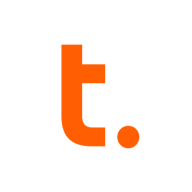

Teradata and Talend Data Fabric compete in the data management solutions category. Talend appears to have an edge with its integration and transformation capabilities, while Teradata holds a strength in analytics and support.
Features: Teradata offers robust analytics, scalability, and efficient data warehousing. Talend Data Fabric provides an extensive range of integration tools, open-source connectivity, and advanced ETL features.
Room for Improvement: Teradata could enhance its deployment complexity and ease of use for broader accessibility. Its pricing structure might be reviewed for affordability. Talend could improve its analytics capabilities, strengthen its data warehousing features, and enhance scalability options.
Ease of Deployment and Customer Service: Teradata involves a complex deployment process necessitating skilled expertise, yet offers strong support. Talend is simpler to deploy with user-friendly, self-service options and reliable customer support.
Pricing and ROI: Teradata's pricing reflects its advanced analytics but may result in high initial costs, achieving significant ROI with data-intensive tasks. Talend offers a lower setup cost, providing excellent ROI through scalable transformation and integration solutions.


Talend, a leader in cloud data integration and data integrity, enables companies to transform by delivering trusted data at the speed of business.
Talend Data Fabric offers a single suite of apps that shorten the time to trusted data. Users can collect data across systems; govern it to ensure proper use, transform it into new formats and improve quality, and share it with internal and external stakeholders.
Over 3,000 global enterprise customers have chosen Talend to help them turn all their raw data into trusted data to make business decisions with confidence — including GE, HP Inc., and Domino’s.
Teradata is a scalable data analytics platform designed to meet enterprise demands for large-scale data management and processing, focusing on performance, scalability, and security for complex query executions.
As a leading data warehousing solution, Teradata integrates advanced analytics enabling organizations to derive insights from massive datasets. It supports high-volume data workloads with its architecture optimized for analytical queries. Users benefit from its robust scalability, allowing seamless expansion as data grows. Teradata's SQL engine is compatible with a wide range of data types, ensuring flexibility in data analysis. With advanced security measures, it protects sensitive data across various environments, providing peace of mind to users handling critical information.
What are the most important features of Teradata?Teradata is widely used in industries like finance, telecommunications, and healthcare, where data-driven decisions are critical. Companies leverage its robust analytics capabilities to enhance customer experiences, streamline operations, and ensure compliance with regulatory requirements. In these sectors, quick access to data insights can significantly impact competitive advantage.
We monitor all Data Integration reviews to prevent fraudulent reviews and keep review quality high. We do not post reviews by company employees or direct competitors. We validate each review for authenticity via cross-reference with LinkedIn, and personal follow-up with the reviewer when necessary.